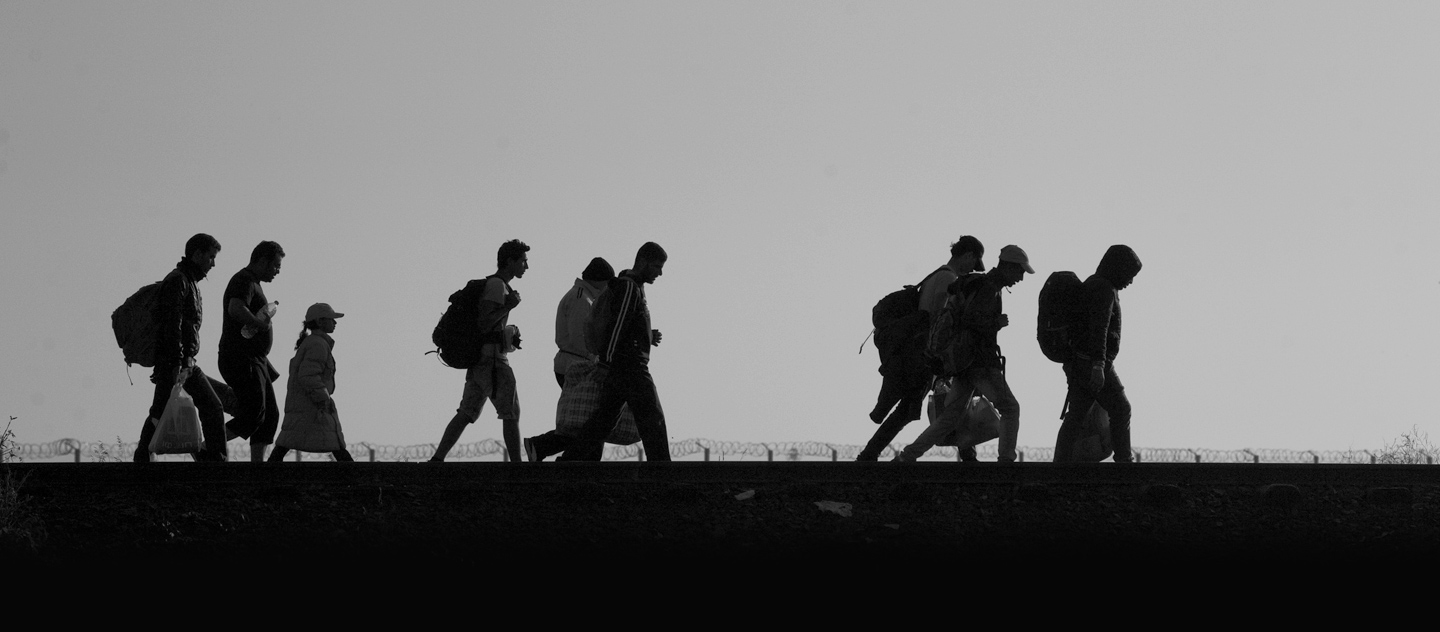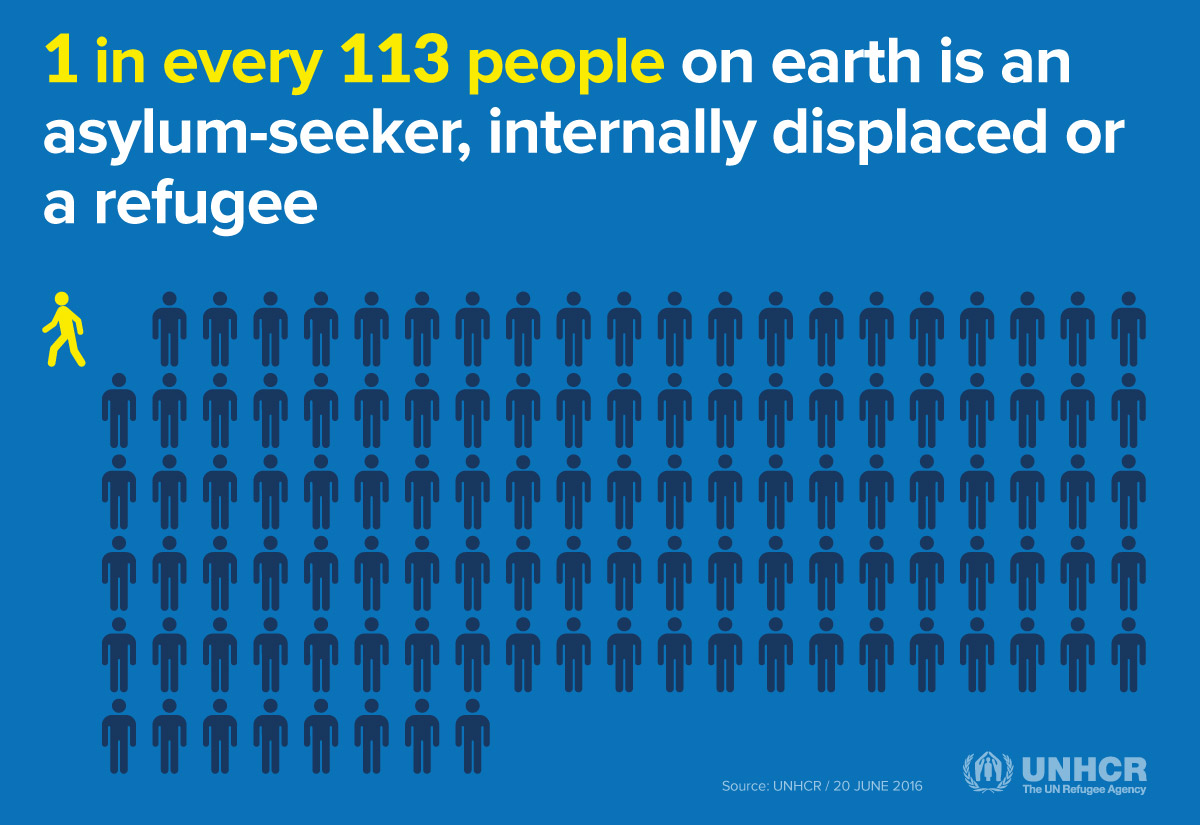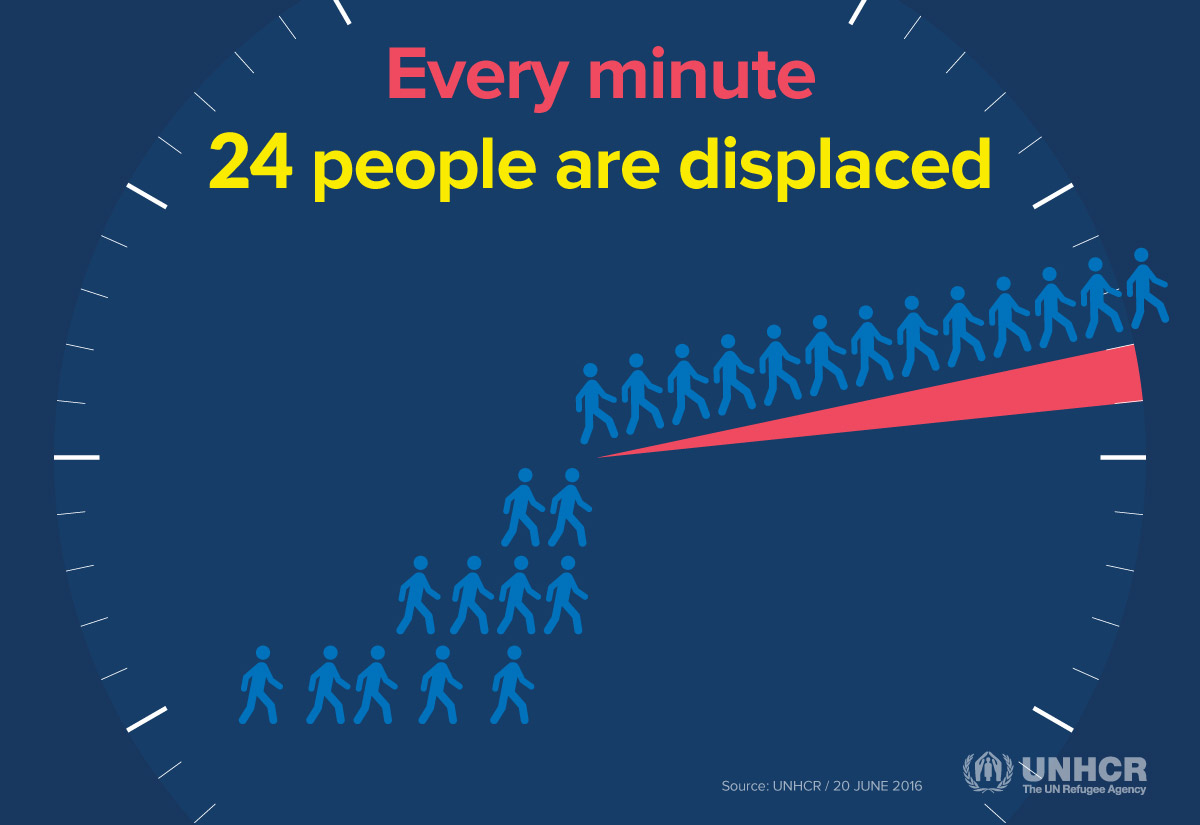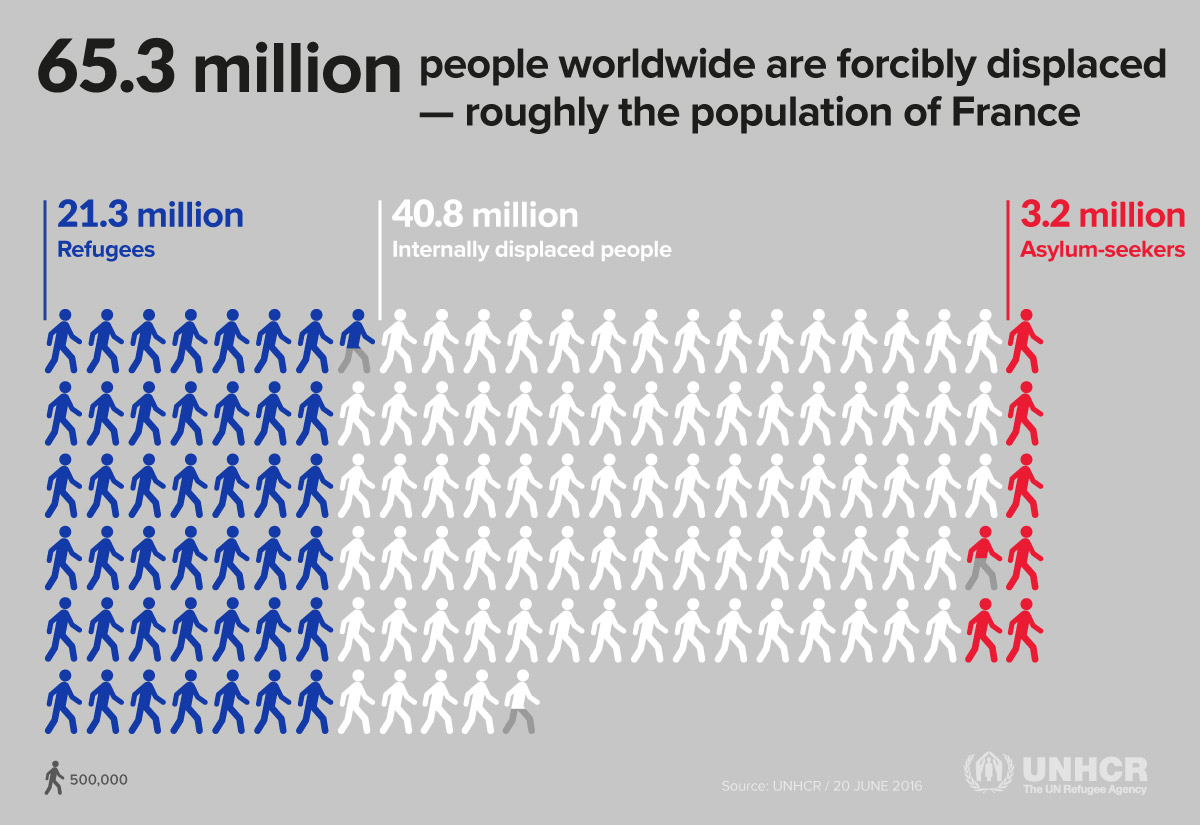Global forced displacement hits record high

Global forced displacement hits record high
GENEVA, June 20 (UNHCR) – Wars and persecution have driven more people from their homes than at any time since UNHCR records began, according to a new report released today by the UN Refugee Agency.
The report, entitled Global TrendsLink is external, noted that on average 24 people were forced to flee each minute in 2015, four times more than a decade earlier, when six people fled every 60 seconds.
The detailed study, which tracks forced displacement worldwide based on data from governments, partner agencies and UNHCR’s own reporting, found a total 65.3 million people were displaced at the end of 2015, compared to 59.5 million just 12 months earlier.
“At sea, a frightening number of refugees and migrants are dying each year. On land, people fleeing war are finding their way blocked by closed borders.”
UN High Commissioner for Refugees Filippo Grandi
It is the first time in the organization’s history that the threshold of 60 million has been crossed.
“More people are being displaced by war and persecution and that’s worrying in itself, but the factors that endanger refugees are multiplying too,” said UN High Commissioner for Refugees Filippo Grandi.
“At sea, a frightening number of refugees and migrants are dying each year; on land, people fleeing war are finding their way blocked by closed borders. Closing borders does not solve the problem.”
Grandi said that politics was also standing in the way of those seeking asylum in some countries.
“The willingness of nations to work together not just for refugees but for the collective human interest is what’s being tested today, and it’s this spirit of unity that badly needs to prevail,” he declared.
The report found that, measured against the world’s population of 7.4 billion people, one in every 113 people globally is now either an asylum-seeker, internally displaced or a refugee – putting them at a level of risk for which UNHCR knows no precedent.
“The tally is greater than the population of the United Kingdom – or of Canada, Australia and New Zealand combined.”
To put it in perspective, the tally is greater than the population of the United Kingdom – or of Canada, Australia and New Zealand combined. It is made up of 3.2 million people in industrialized countries who, at the end of 2015, were awaiting decisions on asylum – the largest total UNHCR has ever recorded.
Also in the tally are a record 40.8 million people who had been forced to flee their homes but were within the confines of their own countries, another record for the UN Refugee Agency. And there are 21.3 million refugees.
Forced displacement has been on the rise since at least the mid-1990s in most regions, but over the past five years the rate has increased.
The reasons are threefold:
- conflicts that cause large refugee outflows, like Somalia and Afghanistan – now in their third and fourth decade respectively – are lasting longer;
- dramatic new or reignited conflicts and situations of insecurity are occurring more frequently. While today’s largest is Syria, wars have broken out in the past five years in South Sudan, Yemen, Burundi, Ukraine and Central African Republic, while thousands more people have fled raging gang and other violence in Central America;
- the rate at which solutions are being found for refugees and internally displaced people has been on a falling trend since the end of the Cold War, leaving a growing number in limbo.
“We’re stuck here. We can’t go on and we can’t go back,” said Hikmat, a Syrian farmer driven from his land by war, now living in tent outside a shopping centre in Lebanon with his wife and young children. “My children need to go to school, they need a future,” he added.
The study found that three countries produce half the world’s refugees. Syria at 4.9 million, Afghanistan at 2.7 million and Somalia at 1.1 million together accounted for more than half the refugees under UNHCR’s mandate worldwide. Colombia at 6.9 million, Syria at 6.6 million and Iraq at 4.4 million had the largest numbers of internally displaced people.
While the spotlight last year was on Europe’s challenge to manage more than 1 million refugees and migrants who arrived via the Mediterranean, the report shows that the vast majority of the world’s refugees were in developing countries in the global south.
In all, 86 per cent of the refugees under UNHCR’s mandate in 2015 were in low- and middle-income countries close to situations of conflict. Worldwide, Turkey was the biggest host country, with 2.5 million refugees. With nearly one refugee for every five citizens, Lebanon hosted more refugees compared to its population than any other country.
Distressingly, children made up an astonishing 51 per cent of the world’s refugees in 2015, according to the data UNHCR was able to gather (complete demographic data was not available to the report authors). Many were separated from their parents or travelling alone.
View the full report.



















